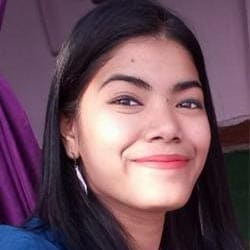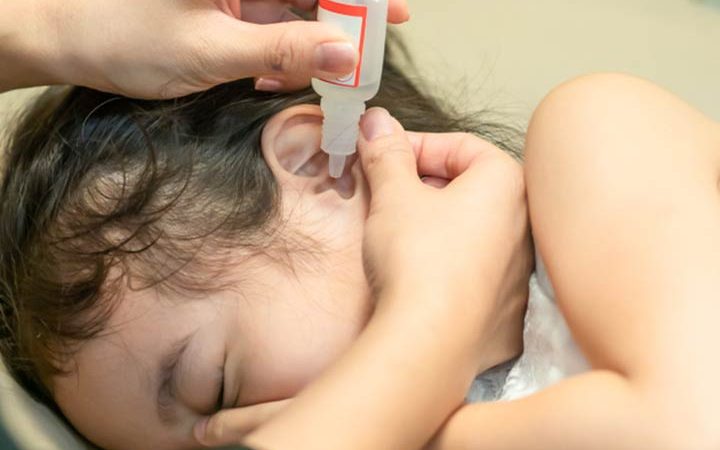Ear wax (cerumen) is a normal bodily secretion and a part of the ears’ self-cleaning mechanism. It is usually expelled from the ear canals naturally through jaw motions such as chewing. However, excess ear wax build-up causes blockage and ear canal obstruction, resulting in impaired hearing and other ear-related problems. This is called impacted ear wax, and the process is called impaction.
Impacted cerumen is a common occurrence in children. If your child is complaining of discomfort in the ear and ear wax can be seen in the ear, it can be wiped off using a cloth. Ear wax removal for children can be done either at home or at the clinic.
Read to know more about the importance of ear wax, symptoms of its impaction, risk factors, and methods for kids’ ear wax removal.
Why Do Ears Make Wax?
Ear wax (cerumen) is produced by the ear for cleaning and protecting itself (1). It is a thinly coated sticky, waterproof, and protective layer near the external opening of the ear canals. It comprises dead skin cells and hair along with the following three components (2)(3).
- Keratin: It is the predominant component of cerumen and acts as a protective barrier.
- Sweat: It is secreted by the modified sweat glands (ceruminous glands). These glands secrete a modified sweat that has bactericidal and fungicidal properties.
- Sebum: It is the oil produced by the sebaceous glands. The oil compromises fat molecules (lipids), which keep the ear lubricated.
Together, these three components of ear wax protect the ear canals from physical damage and microbial invasion. Along with the hair outside the ear canals, ear wax traps dust and other foreign particles that can damage ear structures, such as the eardrums.
What Are The Symptoms Of Ear Wax Build-up?
Ear wax build-up or impacted cerumen usually does not cause any discomfort and comes out on its own (4). However, in some cases, excess ear wax may cause ear canal blockage, mild hearing impairment, and various other ear-related symptoms, including (3):
- Ringing in the ear (tinnitus)
- Earache or pain in the ear (otalgia)
- Foul smell from the ear canal
- A sensation of fullness in the ear
What Are The Risk Factors For Ear Wax Build-up In Children?
Ear wax build-up or impacted cerumen can occur in any individual, regardless of age, gender, or clinical status. However, in a healthy population, it has been estimated that ear wax build-up is more common in the pediatric population (1 in 10 children) than in adults (1 in 20 adults).
The frequent incorrect use of cotton swabs or insertion of other items in the ear to clean it is the most common cause of impacted ear wax. Ear swabs and other items push the wax deeper, causing it to become impacted. Cotton swabs must never be used for children (5).
Dr. Rachel Dawkins, MD, Medical Director and Director of clinical experiences for physicians in training at Johns Hopkins All Children’s Hospital, says the following about cleaning a child’s ear with cotton swabs, “First I would say, don’t. If you feel the need to clean ears use the corner of a washcloth.”
Besides cotton swabs, the following factors may also increase the child’s risk of developing ear wax build-up (3).
- Use of earplugs, earbuds, and hearing aids
- Children with developmental delay
- Certain skin diseases, such as eczema
- Anatomical changes in the ear, such as stenosis (narrowing) or osteoma (benign bony growths in the external ear canals)
- Failed keratinocyte separation in the external ear canals as part of skin turnover
- Overgrowth of hair in the ear canals
When To See A Doctor?
You should consult a doctor if your child experiences the following conditions.
- Continuous pulling and tugging of the ear
A doctor will check for the possible reasons for ear wax build-up, including the presence of underlying health conditions, causing excess ear wax formation, or its poor movement.
What Is The Treatment For Ear Wax Build-up?
The treatment will depend on the underlying cause of ear wax build-up and the extent of ear wax impaction. You may be referred to an otorhinolaryngologist (ENT specialist) specializing in ear wax removal.
The doctor may consider any of the following treatments to remove excess ear wax (6).
- Irrigation or ear wax flushing: A mixture of slightly warm water, saline, and other wax-softening agents is poured into the ear canal through a syringe. The doctor may wait for a few minutes before sending a mild jet of saline solution to flush out the loosened ear wax.
- Manual removal: The doctor inserts an endoscope, a tube with a camera on its end, inside the ear canal to view it on a monitor. Specialized tools are then used to chip the impacted ear wax and suction it out gently.
- Medication: Recurrent impacted cerumen may require medication. The doctor may prescribe child-safe medicated ear drops for relief from ear wax build-up.
How To Remove Ear Wax At Home?
If your child is younger than six years, you must see a doctor for any ear wax build-up. You may consider the following home remedies for children older than six years (7).
- Child-safe ear wax softener ear drops: These drops are often hydrogen peroxide-based. Avoid those with carbamide peroxide if your child is younger than 12 years since the compound could be unsafe for them (8). You may use the drops for four days or as directed on the packaging.
- Baking soda solution: You may make homemade baking soda ear drops by mixing a quarter teaspoon (1.25ml) of baking soda with two teaspoons (10ml) of water. Add five drops in the affected ear twice a day for four days.
- Ear canal flushing: You will need a bulb syringe, which you can purchase at a pharmacy. Suction some lukewarm water in the syringe and squirt it into the ear canal. Wait for a few seconds and then tilt the child’s head to let the water out. You may do this three to four times in one session.
Avoid pouring oils or glycerine in your child’s ear since it may affect the ear drum or may cause irritation. Never try ear candling since it could increase the risk of burns (9). If your child has no relief from ear wax build-up for four days, consult a doctor for treatment.
Ear wax is a normal bodily secretion but may often get impacted due to various factors. The use of cotton swabs, especially by children themselves, could increase the risk of impacted cerumen. Home remedies could provide relief in most cases. However, prolonged impaction of ear wax and ear wax build-up due to underlying disorders will require medical treatment to avoid complications and have a healthy ear.
References:
MomJunction’s articles are written after analyzing the research works of expert authors and institutions. Our references consist of resources established by authorities in their respective fields. You can learn more about the authenticity of the information we present in our editorial policy.
Recommended Articles
- ADHD Medications For Children: Dosage, Side Effects, And Precautions
- What Age Should A Child Get A Phone? Uses, Benefits, And Side Effects
- Depression In Children: Types, Symptoms, Causes, Treatment, And Prevention
- Autism Spectrum Disorder In Children: Types, Causes, Treatment And Prevention
The following two tabs change content below.




































